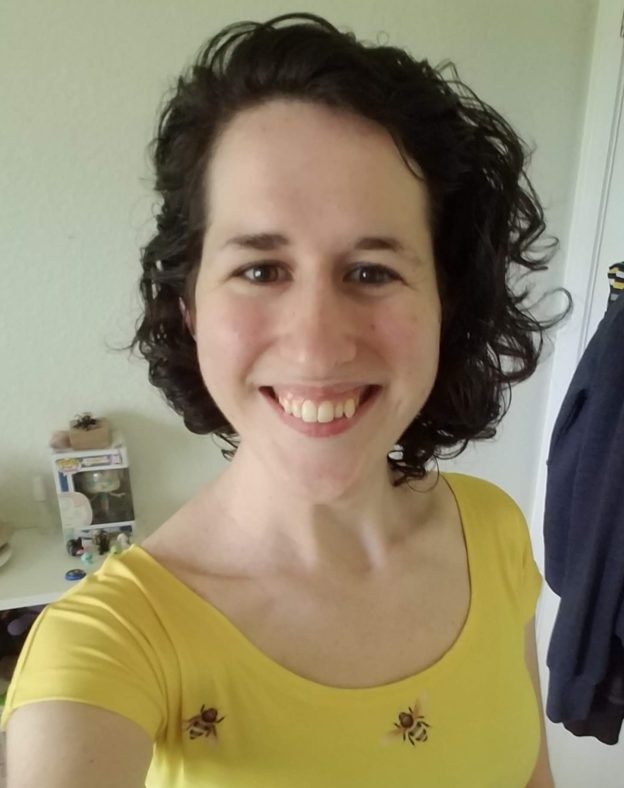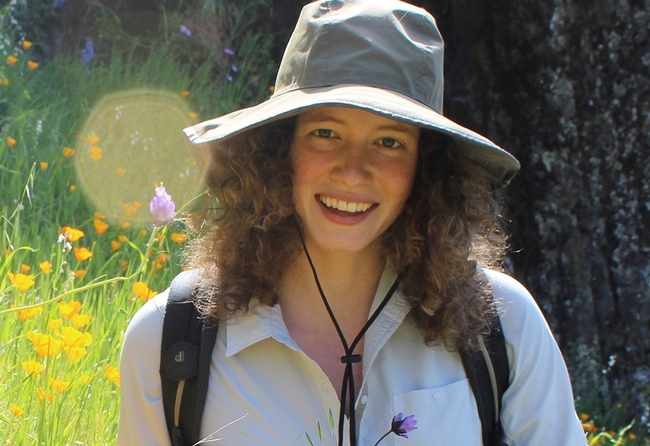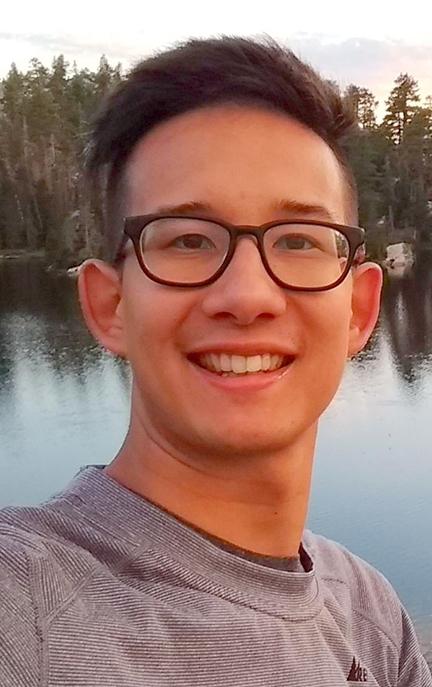- Author: Kathy Keatley Garvey
Three UC Davis doctoral students won major awards in the highly competitive 10-minute student speech competitions at the Entomological Society of America's annual meeting, held Oct. 31-Nov. 3 in Denver. The event involves graduate students presenting their papers or ongoing research, in collaboration with their major professors or co-authors.
Danielle Rutkowski, with the lab of community ecologist Rachel Vannette, associate professor, UC Davis Department of Entomology and Nematology, won the first-place award, the President's Prize, in her category, Plant-Insect Ecosystems: Ecology 3, with her presentation on "Fungicide Impacts on Bumble Bees Are Mediated via Effects on Bee-Associated Fungi." Her co-advisor is community ecologist Rick Karban, professor, UC Davis Department of Entomology and Nematology. Taking home second place was Kassie Hollabaugh of the University of Tennessee, Knoxville.
Maureen Page, with the lab of pollinator ecologist Neal Williams, professor, UC Davis Department of Entomology and Nematology, scored second place for her presentation, "Optimizing Pollinator-friendly Plant Mixes to Simultaneously Support Wild and Managed Bees." She competed in the category, Plant-Insect Ecosystems: Pollinators. Hannah McKenzie of Ohio State University won first place, the President's Prize.
Kyle Lewald, with the College of Biological Sciences and the Integrated Genomics and Genetics Graduate Group, but a member of the lab of molecular geneticist and physiologist Joanna Chiu, professor and vice chair of the UC Davis Department of Entomology and Nematology, won second in his category, Systems, Evolution and Biodiversity: Genetics and Molecular Biology, with his speech on "Assembly of Highly Continguous Diploid Genome for the Agricultural Pest, Tuta absoluta." Amanda Markee of the University of Florida took home first place, the President's Prize.
Danielle Rutkowski's abstract

Maureen Page's abstract
Kyle Lewald's abstract
Tuta absoluta represents one of the largest threats to tomato production worldwide. While initially contained to South America throughout the 20th century, T. absoluta were detected in Spain in 2006 before rapidly spreading throughout Europe and Asia over the next decade. To facilitate study of pesticide resistance, adaptation, and control strategies, researchers require a high quality, highly contiguous, and well-annotated genome assembly. The currently published genome assembly was generated using short-read technology for the purpose of developing molecular markers and studying population genetics; however, due to the genome's large size, heterozygosity, and repetitiveness, the assembly was highly fragmented, making it unsuitable for annotation or functional genomic studies. To address this, we extracted DNA from a single T. absoluta individual for sequencing with long-read PacBio HiFi technology to avoid assembly issues expected due to high genetic diversity and repetitiveness. We have now successfully created a diploid assembly that contains 98% of complete BUSCO groups and 99% of initial raw reads, with an N50 of 6Mb. The genome is 3% heterozygous, and is 60% composed of repeat elements, explaining the fragmented nature of the previous assemblies. By annotating this assembly with previously published RNAseq, protein, and repeat-element datasets, we expect this resource to advance efforts in understanding and developing control strategies for this invasive moth. (Paper co-authored with Joanna Chiu)
At the ESA's annual meetings, students are offered the opportunity to present their research and win prizes. There are several components to the competition: 10-minute papers (oral), posters, and infographics. First-place winners receive a one-year free membership in ESA, a $75 cash prize, and a certificate. Second-winners score a one-year free membership in ESA and a certificate.
The 7000-member Entomological Society of America, founded in 1889 and headquartered in Annapolis, Md.,, is the world's largest organization serving the professional and scientific needs of entomologists and others in related disciplines. Its members are in educational institutions, health agencies, private industry, and government.


